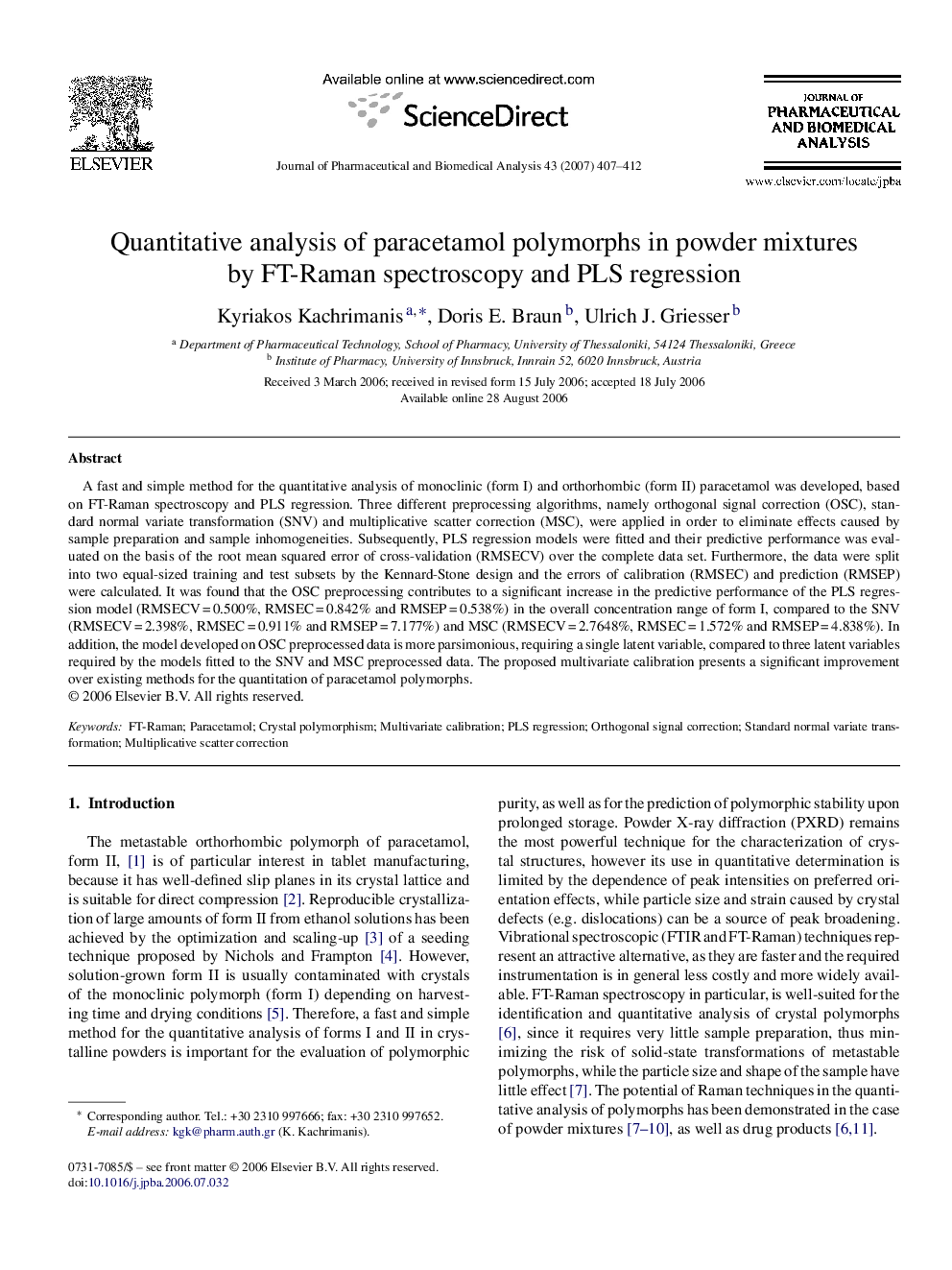| Article ID | Journal | Published Year | Pages | File Type |
|---|---|---|---|---|
| 1224336 | Journal of Pharmaceutical and Biomedical Analysis | 2007 | 6 Pages |
A fast and simple method for the quantitative analysis of monoclinic (form I) and orthorhombic (form II) paracetamol was developed, based on FT-Raman spectroscopy and PLS regression. Three different preprocessing algorithms, namely orthogonal signal correction (OSC), standard normal variate transformation (SNV) and multiplicative scatter correction (MSC), were applied in order to eliminate effects caused by sample preparation and sample inhomogeneities. Subsequently, PLS regression models were fitted and their predictive performance was evaluated on the basis of the root mean squared error of cross-validation (RMSECV) over the complete data set. Furthermore, the data were split into two equal-sized training and test subsets by the Kennard-Stone design and the errors of calibration (RMSEC) and prediction (RMSEP) were calculated. It was found that the OSC preprocessing contributes to a significant increase in the predictive performance of the PLS regression model (RMSECV = 0.500%, RMSEC = 0.842% and RMSEP = 0.538%) in the overall concentration range of form I, compared to the SNV (RMSECV = 2.398%, RMSEC = 0.911% and RMSEP = 7.177%) and MSC (RMSECV = 2.7648%, RMSEC = 1.572% and RMSEP = 4.838%). In addition, the model developed on OSC preprocessed data is more parsimonious, requiring a single latent variable, compared to three latent variables required by the models fitted to the SNV and MSC preprocessed data. The proposed multivariate calibration presents a significant improvement over existing methods for the quantitation of paracetamol polymorphs.
